The new service of AeroRooms, as well as more comfortable and spacious airport lounges with their increased capacity, will contribute to meeting the strategic objective of Prague Airport in the non-aviation business, i.e. the continuously growing share of our non-aviation trade revenues in the total revenues of Prague Airport.
After reducing emissions, eliminating noise and protecting groundwater and surface waters, Václav Havel Airport is embarking on a new environmental protection program. It aims to reduce the consumption of disposable plastics in the airport environment as much as possible and to encourage passengers to consume this kind of plastic as little as possible.
For our company, plastic products are becoming an increasing issue to fight against. Even if we now completely stop the production of all plastics and their products, they will still be a problem for many generations to come.
According to a study published in 2017 in the prestigious science journal Science, we have managed to “enrich” our planet by 8.3 billion tons of plastics, whose collection, recycling and subsequent disposal will be a big problem. Moreover, the production rate of plastics remains high and if we do not significantly reduce it, we can be overwhelmed with up to 34 billion tons of plastics in 2050.
This scenario not only stresses out many but also begins to affect many businesses and governments that try to avoid it. This is evident by the recent decision of the European Union to definitively ban the use of disposable plastics, which are one of the most problematic forms of plastic products. It wants to say goodbye to Václav Havel Airport nowadays in the new program Plastics No Longer.
“Although the European Parliament has approved a ban on the use of disposable plastics only since 2021, Prague Airport is already launching its own initiative and will gradually put into practice concrete measures to reduce disposable plastics. The aim is, among other things, to motivate passengers to reduce their environmental impact and to travel with, for example, reusable beverage bottles or to dispose of beverages in disposable plastic bottles prior to a security check but to empty them and use them again,” said the Director of Prague Airport Environmental Protection.
In the fight against plastics, Prague Airport joins other airports around the world, including San Francisco. This completely banned the sale of water in plastic bottles at the terminal, which is one of the most common and often unnecessarily thrown away plastic waste due to airport checks and drinks while waiting for connections. It is often impossible to fill the bottle behind the control gates, so there is nothing else to do but to throw it out and buy a new one.

Photo: Prague Airport
Do not throw away the bottle before inspection
One of the measures offered by the new Prague Airport to passengers is, therefore, a sink and drinking system that allows the liquid to be poured out before the check and the same bottle is filled with drinking water free of charge. Sinks can only be found at Terminal 2 for the time being, with more being added.
At the same time, the airport reduced the disposable plastics in the internal catering of the airport staff. Water in plastic bottles will no longer be offered in offices, meeting rooms and various events. They replace glass decanters with water, often enriched with a variety of herbs. Glasses and small coffee milk in a plastic container will replace plastic cups and milk jugs, respectively.
The airport will motivate tenants to take similar steps. Lagardére Travel Retail, which operates several restaurants and snack bars within the airport, joined the Plastics initiative for the first time. In 2020, instead of disposable cups, customers will receive backed-up cups that they will return after drinking.
“Prague Airport also commissioned a study to help with the selection of suitable alternatives for disposable plastics. Therefore, when choosing alternatives, we will focus on the entire product life cycle, not just one aspect, such as biodegradability. Our aim is to choose a variant that is truly environmentally more beneficial than a plastic variant. Plastic is not always the worst variant, as is gradually confirmed,” added Soňa Hykyšová.

Photo: Prague Airport
Just released, World of Airports is a new modern airport management game created by Czech developers together with Prague Airport.
It all started as a small fun project, with their first game AirportPRG, but after thousands of downloads, they have created a new one with more options. World of Airports adds new features such as airport expansion, story mode, multiplayer as well as featuring stunning visuals.
It offers an authentic virtual environment in which each player controls the airport and the airline. Directly at Václav Havel Airport, the game was officially presented by the game journalist, Alžběta Trojanová, and aerobatic aviator Petr Kopfstein.
Players can build their airline, expand available connection networks with a new destination and customize livery of their fleet. You get to upgrade the airport facilities and boost up the efficiency of handling other players and generic traffic airplanes.
Besides Václav Havel Airport Prague, the main airport in the game, players have a choice of airports in Innsbruck, Austria and Bari, Italy (more playable airports to come upon release). You get to expand your fleet from the smallest propeller passenger aircraft to large wide-body jetliners. Play online with your friends across platforms (Android and IOS players will share the same online game server), and even download the game using a QR code, which you can find, for example, at observation points near the airport.
Players can also look forward to building the airport of the future in the advanced stage of gaming, as the development of Václav Havel Airport in the game will be in line with how it should look.
According to Martin Kučera, Executive Director of Air Operations at Prague Airport, World of Airports is an exciting combination of entertainment and simulation of real traffic. Through the game, the public can understand what airport traffic involves and how demanding it is.
World of Airports builds on the success of 2017 AirportPRG, which brought players to the Ruzyne airport in the 1930s and 1940s, with thousands of downloads. With World of Airports, creators have listened to the wishes of the community and built a game from the modern era.
Aviation fans will be pleased that the creators took much attention to the details. Everyone else will be thrilled by the pleasant gameplay or the ability to play online with friends across platforms. World of Airports can be downloaded for free from the App Store or Google Play and played by users of mobile devices running iOS or Android.
Download it, take control of the skies and dispatch your fleet in the World of Airports.
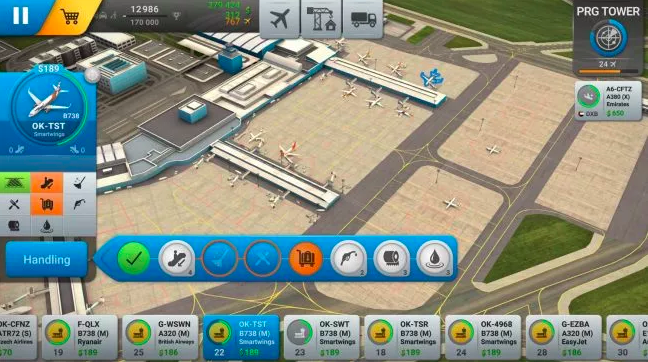

By 2035, Prague Airport should increase its capacity up to 23 million passengers per year.
This year it handles 17.7 million people, which is a year-on-year increase of 5.8%, although it is already facing capacity problems. According to Václav Řehoř, Chairman of the Czech Aeroholding Board of Director, ten per cent of the arrivals at Terminal 1 had to be declined this summer. Passenger numbers are growing continuously since 2013.
The requirements to increase the airport capacity are the construction of a parallel runway, the centralization of security controls and building new boarding sections D and E. Section D should be built at Terminal 2 by 2029 and section E by 2036.
Along with completing the parallel runway, it will be necessary to shut down the existing secondary runway. After the launch of the new track in about eight years, it is expected that night operations at the airport will be cancelled. The runway will only be used for take-offs. Upon commissioning, the airport’s capacity will increase to 250,000 per year.
The Minister of Transport, Vladimír Kremlík (ANO) added that by 2028, an electrified double-track railway line should lead to the airport and Kladno. It is planned to build several elevated junctions on the Prague ring road and the roads leading to the airport.
The journey from the centre of Prague to Václav Havel Airport in Ruzyně should take 25 minutes along the planned railway line. From the railway for nearly 40 billion crowns, which will also lead to Kladno, only part of the Negrelli viaduct is being elaborated.
The adjustment of the monorail and non-electrified line to Kladno with an annexe to Prague Airport has been under construction for years. The new connection should allow a ten-minute interval of trains going to the airport and Kladno.
As of Sunday, 27 October 2019, the winter flight schedule becomes effective. It will provide flights from Václav Havel Airport Prague to 121 destinations in 46 countries. New additions will include Lviv, Kharkiv, Chisinau, Florence, Beirut, Nur-Sultan and Keflavik. Altogether, Prague Airport will fly to fifteen new destinations during the winter season.
There will be 60 direct flights from Prague during the winter flight schedule, 13 of them are low-cost.
New destinations include Lviv, Kharkiv, Chisinau, Casablanca, Perm, Florence, Nur-Sultan, Stockholm – Skavsta, Bournemouth, Billund, Beirut, Keflavik, Malta, Odesa, and Venice – Treviso. This year, four airlines will newly operate their flights from Prague also in winter, including SCAT Airlines, SkyUp Airlines, Air Malta and Arkia Airlines.
“Czech passengers will benefit from these new opportunities for traveling abroad. In addition to new destinations in Eastern Europe, they can fly to places where Prague Airport traditionally has direct flights only in summer, such as Iceland or Malta,” says Václav Řehoř, the Chairman of the Prague Airport Board.
The busiest country with regard to the number of destinations, even in winter, is the UK, where 17 different destinations are offered, including all major international London airports, which are serviced by direct flights from Prague. The second busiest country is Italy (11 destinations), followed by Russia (10 destinations), Spain (9 destinations) and France (8 destinations).
Most flights in winter will fly to London (up to 93 flights per week, Moscow (up to 70 flights per week), Amsterdam (up to 51 flights per week), and Warsaw (49 per week).
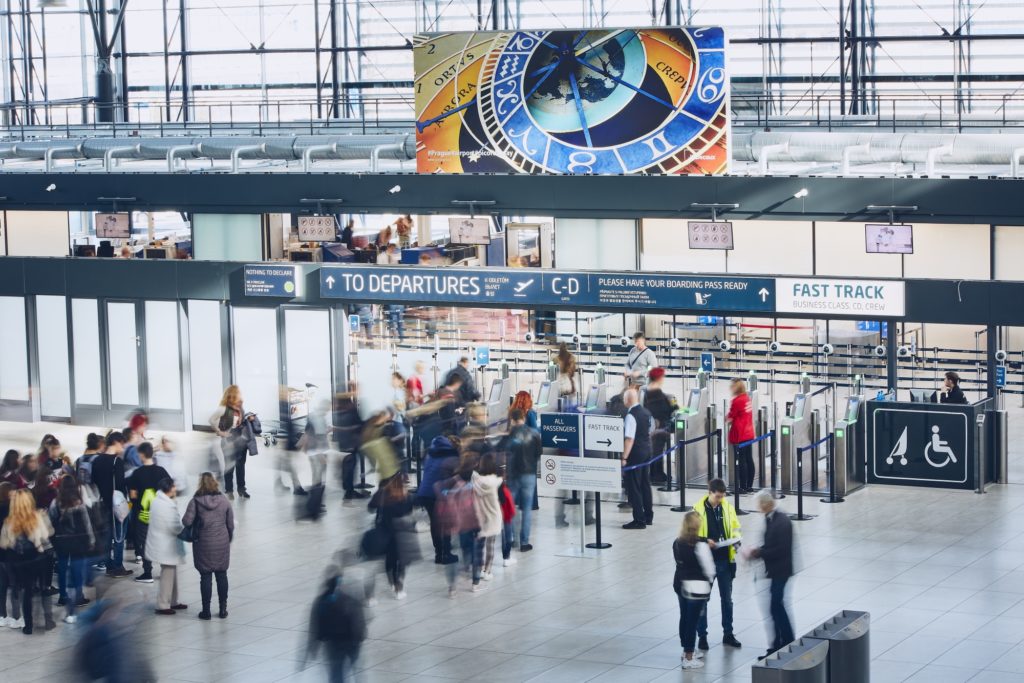
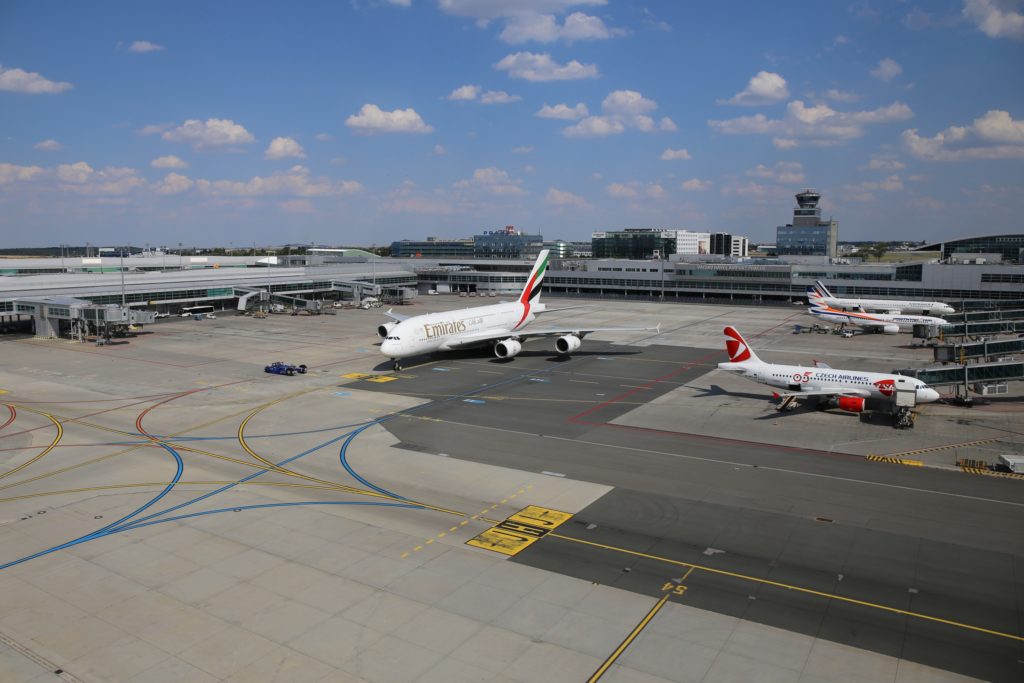
Prague Airport recorded a 6% increase in the number of checked-in passengers from July to September 2019, a total of 5,812,597 travelers.
August was the busiest month, while Prague Airport recorded the highest year-on-year increase in the number of passengers in September. Most passengers in this period were heading to London, the busiest destination followed by Moscow and Paris. As a holiday destination, most flights were to Antalya, Burgas, and Barcelona.
The number of checked-in passengers on flights to holiday destinations also increased, a total of 1,685,727 passengers, which is 8.8% more than last year.
Prague Airport also saw an increase in the number of passengers handled on flights to a total of 15 long-distance destinations. From July to September, 464,969 passengers used these routes, 12% more than last year, and the most significant increase was recorded by routes to North America by 28.7%.
While the number of passengers handled increased year-on-year at Prague Airport, in the case of air movements, the airport experienced the opposite. The most significant decline was recorded in August by -1.5%. In July, August, and September, the number of air movements dropped by 1.0% year-on-year.
The airport’s excellent operating results are due to newly opened air connections, increasing flights to existing destinations and continually expanding the capacity on existing routes.
During the winter season, Czech Airlines will increase frequencies on flights to Kiev and Moscow. Flights to the capital of Ukraine will now operate up to eight times a week, while Sheremetyevo International Airport in Moscow will be served three times a day.
Czech Airlines will also extend several summer routes into the winter season. Its winter schedule will thus feature flights to Beirut and Odessa, which will operate at least two times a week, and a connection to Keflavík, Iceland, now with a stopover in Copenhagen, which will be available to passengers daily.
Moreover, capacity on three direct routes operated by Czech Airlines will be increased. Beginning at the end of October, selected flights to Budapest and all flights to Düsseldorf will be serviced by larger aircraft, namely Airbus A319 or Boeing 737, replacing the ART turboprop aircraft currently in service.
Smartwings is also increasing the number of flights it operates in its winter schedule. The route between Prague and Rostov-on-Don will now be served three times a week. In addition, Smartwings will operate more flights on the route to St. Petersburg, which will be available every day from the start of the winter schedule, and, as usual, relaunch service to Dubai, United Arab Emirates.
Prague has been discussing how to improve public transport to the airport for many years. Passengers who do not drive their own vehicles can now use buses of line 119, or taxi.
There has been much talk about the construction of the railroad track right up to the terminals or the extension of the metro, but overall everything is overtaken by another means of transport. The City of Prague announced that the 119 buses will be replaced the large-capacity electric buses in 2023.
They should relieve the current onslaught as they offer much greater capacity, as well as relieve the environment.
“The priority for us is still the fast-track to the airport, which is an investment of the Railway Infrastructure Administration and we are working intensively on it. However, due to the size of the building, this is the first solution for 2028. We decided to make it easier for passengers as soon as possible,” said Deputy Mayor of Transport Adam Scheinherr.
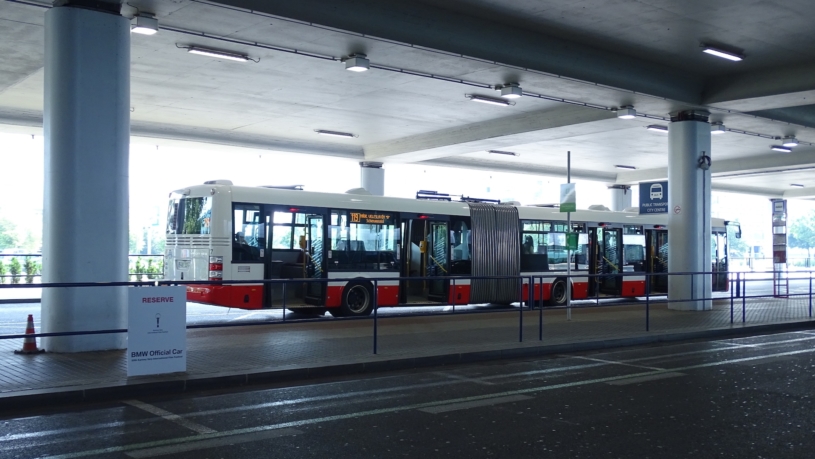
The result should be the electrification of route 119, for which Prague plans to purchase a total of 20 large-capacity three-cell battery-electric buses. “They will be 25 meters in length, which will greatly improve passenger comfort, make transportation easier by avoiding the adding of more bus connections while reducing exhaust emissions to zero,” adds Scheinherr.
The electrified line will, therefore, be built on the route from Nádraží Veleslavín to Václav Havel Airport, however, the trolleys that will be powered by the electric buses will not be all the way. Partial trolleybuses should be deployed, which can run part of the route without trolley lines only on batteries.
The total investment in electrification is expected to cost almost 900 million crowns, with the most going to battery buses.
In addition, Prague wants to take advantage of the synergies within the tram power network when constructing the electrified line. Although electric buses should not only be a temporary solution before the railway line is built at the airport, it will also find use elsewhere.
The infrastructure will also be used to extend the tram line from Divoká Šárka to Dědina, and Prague plans to deploy electric buses on the overloaded 112 line.
Within the next phase, the new trolleybuses are intended to relieve passengers primarily from the airport (because the line 119 today runs every 3-5 minutes, and the total number of connections in one direction is up to 250 daily, which at times it is overloaded). Since it makes no sense to further shorten the interval, Prague decided to invest in larger electric buses.
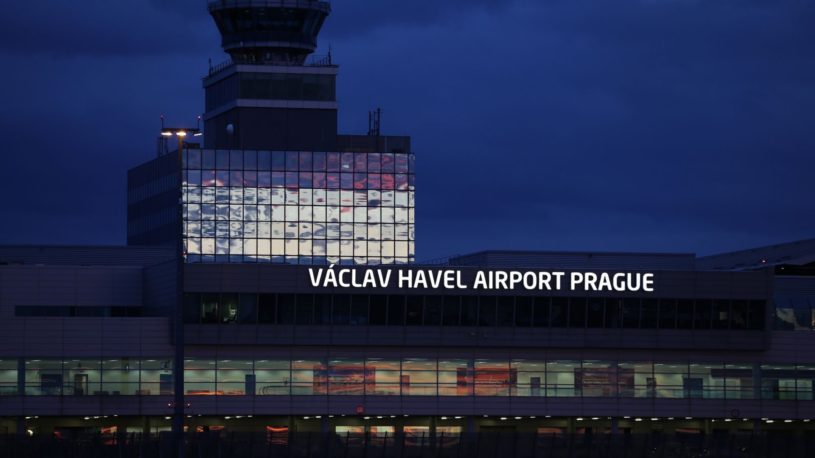
Prague Airport has opened the 14 room AeroRooms Hotel, designed for both connecting passengers and clients who need short-term accommodation near the terminals.
The new hotel replaces Rest&Fun Center, which offered eight rooms exclusively for passengers with connecting flights. At the same time, Prague Airport is gradually renovating airport lounges to double their capacities and increase passenger comfort.
“Through our new AeroRooms Hotel project, we are responding to the continuously growing number of passengers and changing composition of potential customers. Our hotel is primarily to expand the airport’s accommodation capacities, increase their quality, and make them available to greater numbers of passengers,” said Jiří Petržilka, executive director of the non-aviation business of Prague Airport.
Prague Airport has invested approximately 14 million CZK into AeroRooms hotel, primarily into extensive construction and technical modifications. Their purpose was not only to increase the hotel’s capacity and establish access from the airport’s public zone, but also to ensure strict safety standards associated with the hotel’s operation directly at the terminal of a large international airport.
Hotel rates start at CZK 1,999 (approx.77 EUR) per night per room. The hotel is open non-stop.
In addition to the newly opened AeroRooms hotel, Prague Airport is also expanding its premium lounge services. In October 2019, the airport will start the renovation of Erste Premier Lounge at Terminal 2, which will be completed in time for the next summer season. The Mastercard Lounge at Terminal 1 will then be expanded. The expansion work will boost the capacity of each lounge by almost 100%.
“Passengers’ demand for lounges experience has been growing over the years. As with other airport infrastructures, however, our lounges are reaching their maximum capacities. These modifications will enable us to increase their capacities with a reserve large enough for the next seven years, when our expanded Terminal 2 will be put into operation, offering new premises for our airport’s premium services,” said Petržilka.


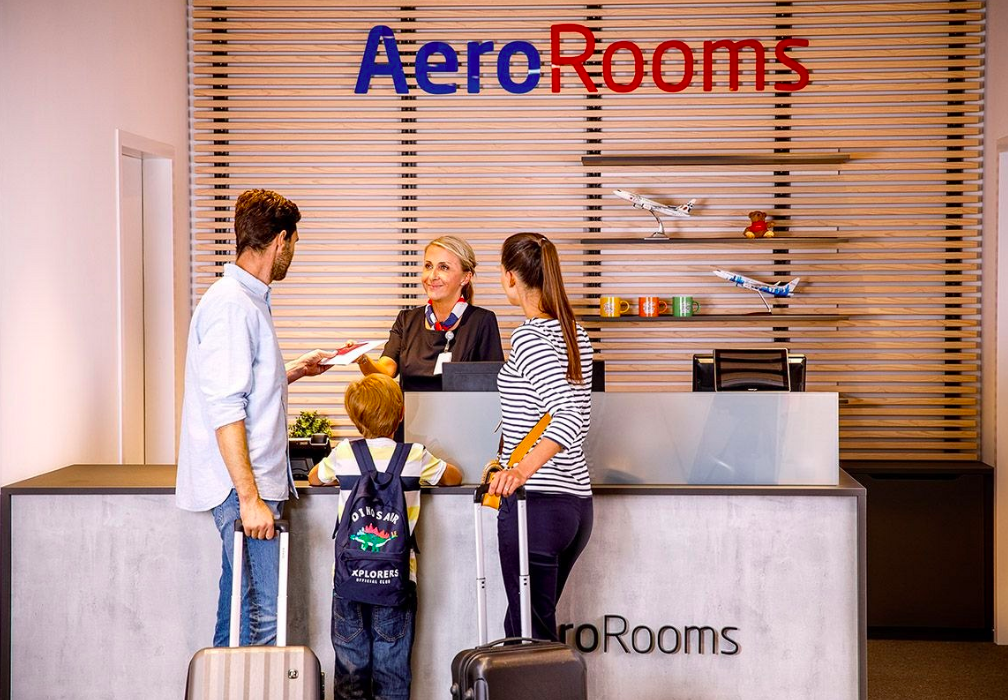
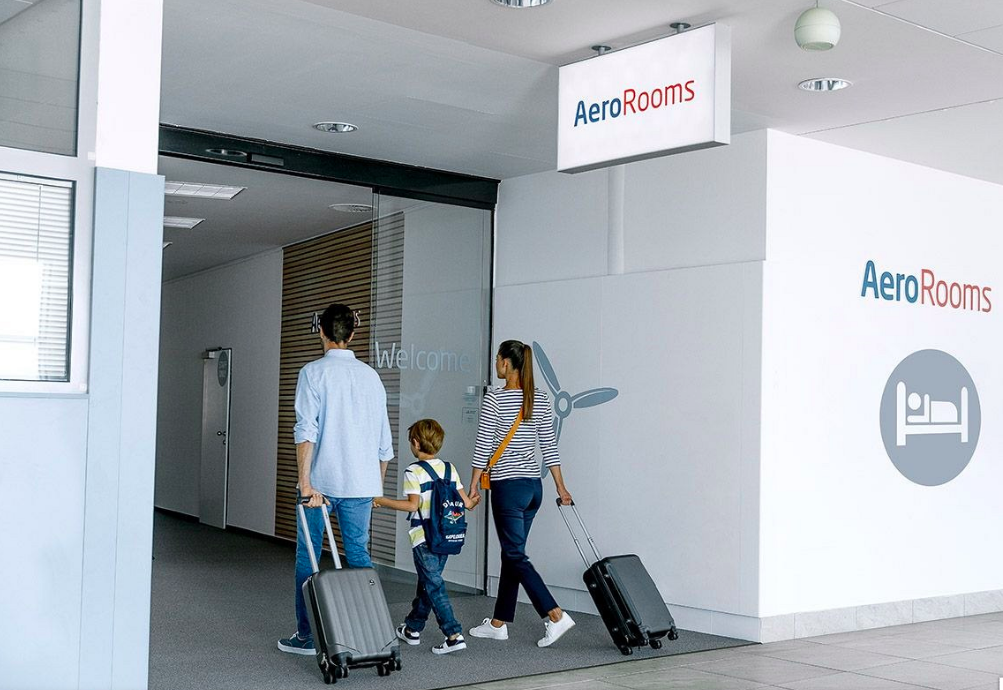
Analysing data provided by Taxi-Calculator.com, the average price to travel from the city centre to the main airport (or vice versa) for 14 European capital cities has been calculated, taking into consideration price per mile, base fares, and distance*.
Which cities are the cheapest?
For the cheapest airport transfer, results show that Lisbon is the place to be – for a 5.4km journey from the city’s airport to the centre will cost travellers a mere 5.79 euros. In second place is Ankara – Turkey’s capital will set you back only 13.64 euros for a 26.5km journey.
Meanwhile, the remaining top countries for cheap travel are as follows: Madrid (18.56 euros), Berlin (20.10 euros), Prague (21.31 euros), Vienna (23.75 euros) and Athens (26.45 euros).
Which cities are the most expensive?
Taxi2Airport can reveal that, at a whopping 52.07 euros (20.8km journey), Amsterdam tops the table as the most expensive capital city to reach, from Amsterdam Airport Schiphol. The next most expensive city is, less surprisingly, London at 50.60 euros for 25.6km – dropping you off at London Heathrow. In third place is Stockholm. The city’s low fares of 1.13 euros (and 4.22 euros base fee) are unfortunately cancelled out by the distance required to reach its airport, Stockholm Arlanda Airport (40.3km) – as such, the overall total becomes 49.76 euros.
Finally, the remaining expensive cities are: Bern (43.84 euros), Paris (42.73 euros), Rome (36 euros) and Brussels (26.88 euros).
Results include:
- Lisbon’s airport transfers are the cheapest, costing only 5.79 euros.
- Amsterdam is the most expensive city – to reach Amsterdam Airport Schiphol and or back costs a shocking 52.07 euros.
- Costing 50.60 euros to reach Heathrow and or back, London has the second most expensive taxi fare.
- Stockholm has the third most expensive taxi services, costing 49.76 euros.
At least three Russian airlines have canceled most of their Tuesday flights to the Czech Republic over what they said was the country’s decision to revoke flight permissions to and from Prague.
The flagship carrier Aeroflot and Ural Airlines are the only Russian airlines that perform direct flights to and from Prague. Czech Airlines performs return flights to and from Moscow twice a day.
“Because of the decision by the Czech Republic’s aviation authorities to revoke earlier issued permits for Moscow-Prague-Moscow flights, Aeroflot has to cancel following flights: SU2010/2011, SU2014/2015, SU2016/2017 and SU2018/2019, scheduled for 2 July”, the airline said in a statement.
At the same time, flights SU2012/2013 and SU2024/2025 will be carried out as scheduled, according to Aeroflot.
Ural Airlines also “indefinitely” canceled flights to Prague from Moscow and Yekaterinburg on Tuesday, then said its Yekaterinburg-Prague flights had been restored.
Aeroflot-owned Pobeda Airlines canceled flights from Moscow to the Czech spa town of Karlovy Vary.
The Czech Republic “used the parity rule” and revoked Russia’s permits because it was unhappy with terms offered to Czech Airlines for flights going over Siberia from Prague to Seoul, the country’s transport ministry said.
No statement has been issued by Aeroflot regarding the decision by the Czech aviation authorities. According to the Russia-based airline, the company will closely monitor the situation and any affected passengers will be updated on new developments.
Author: red
Czech Airlines has resumed flights from Prague to Odesa from May 30, 2019, according to a posting on the Facebook page of the Odesa airport.
The flights will be operated up to four times a week. In particular, from Odesa from May 30 to June 17 the plane will depart on Tuesdays and Fridays, from June 18 to July 1 – also on Sundays, from July 2 – on Thursdays.
Departure time is 5:00 local time. From Prague, from May 30 to June 16, the flight will be operated on Mondays and Thursdays, from June 17 flights on Saturdays will also be added, and from July 1 – on Wednesdays. Departure time is 22:45 local time.
The cost of a one-way ticket starts from UAH 2,700. Czech Airlines is the main airline of the Czech Republic and operates flights from Prague to the main destinations in Europe and Asia.
Author: red
